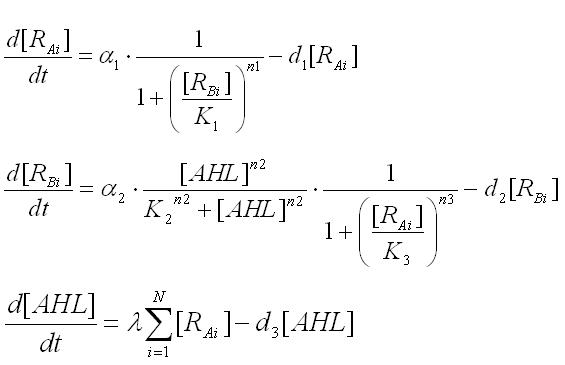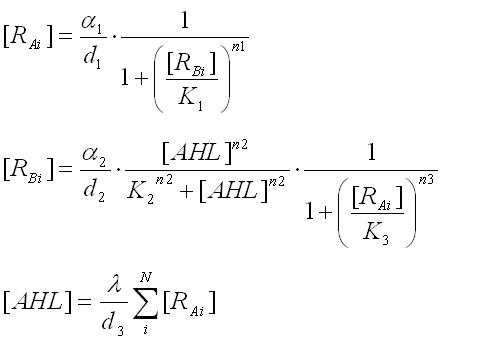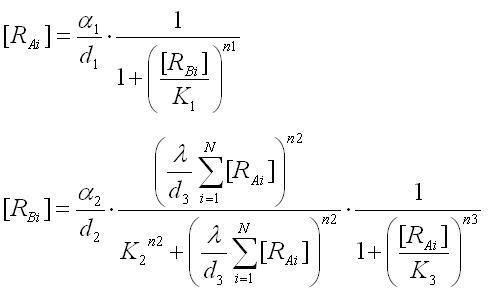Tokyo/Formulation/4.population model
From 2007.igem.org
< Tokyo/Formulation(Difference between revisions)
| (10 intermediate revisions not shown) | |||
| Line 1: | Line 1: | ||
| + | __NOTOC__ | ||
| + | ''' back to [[Tokyo/Works/Simulation |Simulation]]''' | ||
| + | |||
| + | <br> | ||
Next, to consider the number of cells, the differential equations for multiple cells were given as | Next, to consider the number of cells, the differential equations for multiple cells were given as | ||
| Line 7: | Line 11: | ||
<br>[[Image:expression4-2.jpg|400px|none|thumb|Ex4-2]] | <br>[[Image:expression4-2.jpg|400px|none|thumb|Ex4-2]] | ||
| - | and then substitute the third equation into the second | + | and then substitute the third equation into the second equation.The nullclines of this system were derived as |
| + | |||
| + | <br>[[Image:expression7.JPG|400px|none|thumb|Ex4-3]] | ||
| - | < | + | <!-- |
[[Image:parameter4-1.jpg|right|thumb|150px|Table4-1]] | [[Image:parameter4-1.jpg|right|thumb|150px|Table4-1]] | ||
| - | <br>To analyze the equations, the values in the right table were used.The phase plane are shown in Fig● | + | <br>To analyze the equations, the values of parameters in the right table were used.The phase plane are shown in Fig● |
| + | <br> | ||
| + | --> | ||
| + | ''' back to [[Tokyo/Works/Simulation |Simulation]]''' | ||
| + | == == | ||
Latest revision as of 01:56, 27 October 2007
back to Simulation
Next, to consider the number of cells, the differential equations for multiple cells were given as
where N indicates the number of the cells.
In the steady state,time derivatives are zero.As a result,the nullclines of this system were derived as
and then substitute the third equation into the second equation.The nullclines of this system were derived as
back to Simulation


